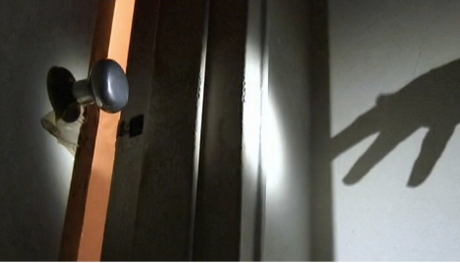
The Thing@The Pink Pony Presents
an evening with Jacob Burckhardt
The Pink Pony
176 Ludlow Street, NYC 10002
(between Stanton & Houston)
Tuesday December 13th, 8:30pm
Screening
I, OF THE CYCLOPS
by George Kuchar, 2006 17 minutes
A poem is read and emotions are unleashed. A book is signed and pets pampered as this tour of talented talkers weaves its way through Provincetown and New Jersey (with a turbulent exit in Manhattan). Enjoy the leisurely portraits and view young and old as they chew the fat in cozy habitats. Featuring, among others, Charles Bernstein, Susan Bee, Mimi Gross, John Waters, and Robert Breer.
A GUIDED TOUR OF EDITH’S APARTMENT
by Jacob Burckhardt, 2010, 47 minutes
In his affecting new film, Jacob Burckhardt documents his mother, the artist Edith Schloss, as, one after the other, and in a non-stop torrent of commentary, she describes the many objects in her apartment, including her own paintings and assemblages as well as works and correspondence by her many friends, including Fairfield Porter, Giorgio Morandi, Peter Rockwell, Meret Oppenheim, Edwin Denby, Rudy Burckhardt, Francesca Woodman, Elliott Carter, Alvin Curran, and many others. Thanks to her long and fascinating life, and her friendship with some of the 20th century’s most important artists, many of the pieces in her home are of great cultural interest. But more importantly, they all embody some sort of emotional or psychological significance for her, making Burckhardt’s deceptively straightforward, home-movie-like film something like his mother’s indirect autobiography, a portrait of a woman through her own work and the belongings she’s gathered over the decades.
Jacob Burckhardt
Over the years JACOB BURCKHARDT has worked at a variety of jobs: Blueberry picker, Steel Mill laborer, Fuller Brush man, Truck driver, Taxi driver, camera repairman, and photographer. He has done sound recording in North Africa and the porn industry, edited and mixed the sound of many independent movies, and now runs a post-production sound editing and mixing facility at Work Edit, inc. He teaches at the Cooper Union and Pratt Institute.
He directed and produced two features: IT DON’T PAY TO BE AN HONEST CITIZEN (1984), with William Burroughs, Allen Ginsberg, and Vincent D’Onofrio, and LANDLORD BLUES (1986). Both films screened at various international festivals and were distributed on video, and now the former has been released on DVD. In 1990 he began a collaboration with the late great Mr. Fashion (AKA Frankie Lymon’s Nephew) and then Royston Scott which has resulted in Four featurettes in the series“Black Moments in Great History”.
Eschewing the money raising rat race, he now prefers shorts, in film and video, where it is possible to preserve a direct relationship between the film and the film makers, and still photography, on gelatin silver paper. His films fall into two categories: comedies that explore the essence of humor, and poetic documentaries concerned with texture, atmosphere, and presence.
George Kuchar
George Kuchar ranks as one of the most exciting and prolific American independent film- and videomakers. With his homemade Super 8 and 16mm potboilers and melodramas of the 1950s, ’60s, and ’70s, he became legendary as a distinctive and outrageous underground filmmaker whose work influenced many other artists including Andy Warhol, John Waters and David Lynch. After his 1980s transition to the video medium, he remained a master of genre manipulation and subversion, creating hundreds of brilliantly edited, hilarious, observant, often diaristic videos with an 8mm camcorder, dime-store props, not-so-special effects, and using friends as actors and the “pageant that is life” as his studio. He died in San Francisco on September 8th at the too-young age of 69, and is already sorely missed.
“Makin’ movies, see, sometimes you see a very beautiful person. And the first thing that comes to my mind is, I want to make a movie of that person. ’Cause I like puttin’ gauzes — ah, cheap, black cloth on the lens with a rubber band — and creating these, what look like 1940s movies, or movies of a beautiful Hollywood style, and blowing these people up bigger than life and making them into gods and goddesses. And I think in the movies that’s a wonderful way of pushing them on the public, and infusing the public with great objects of desire, and dreams, and things of great beauty. Living human beings of beauty.” George Kuchar